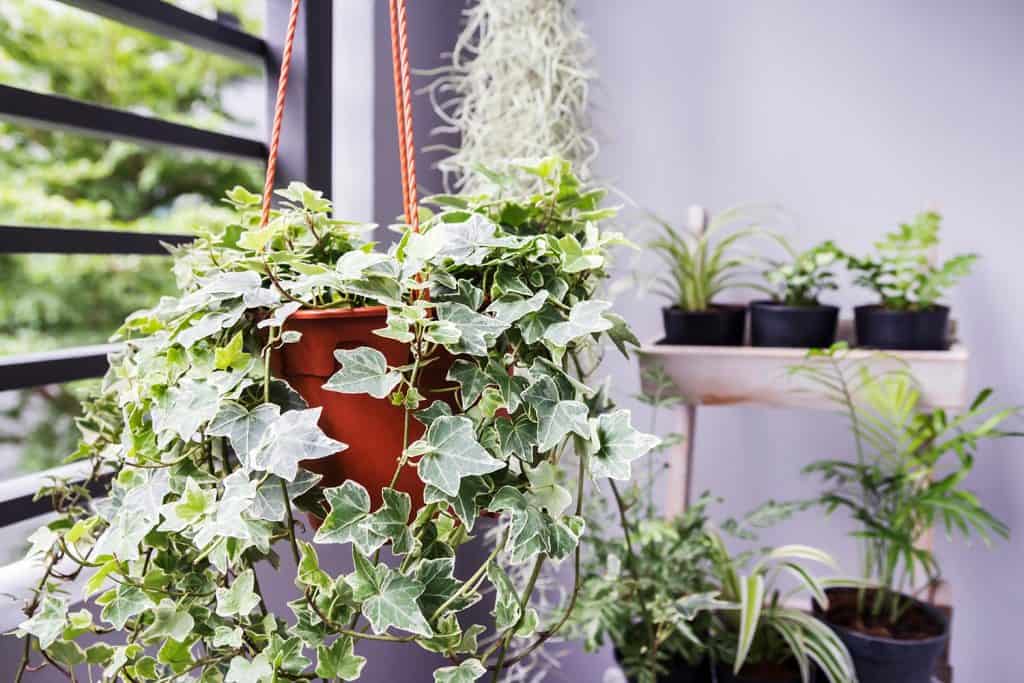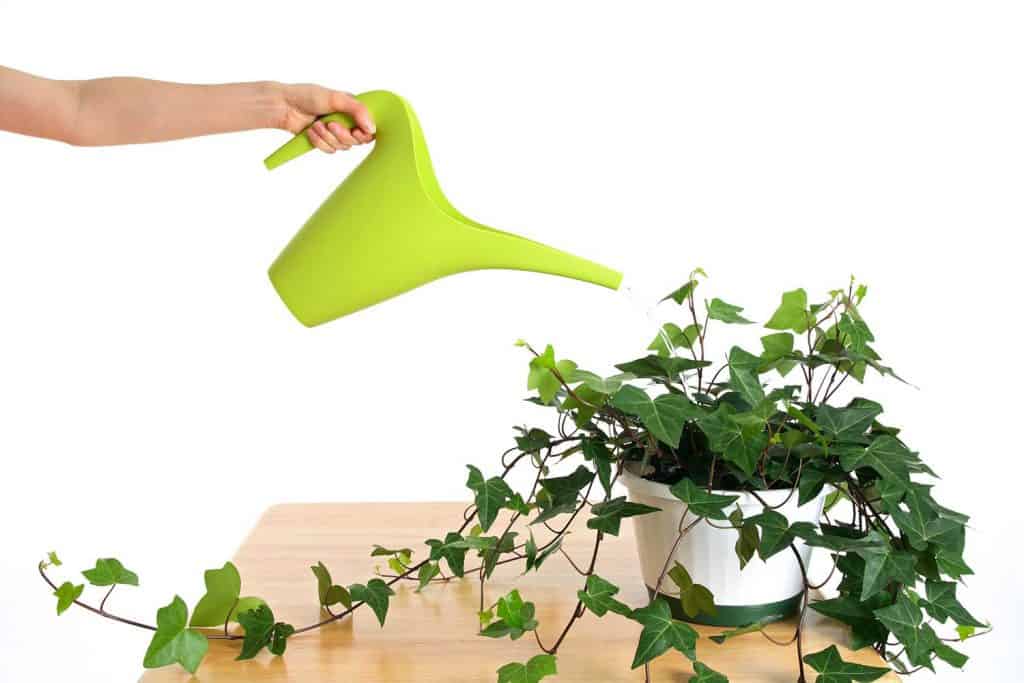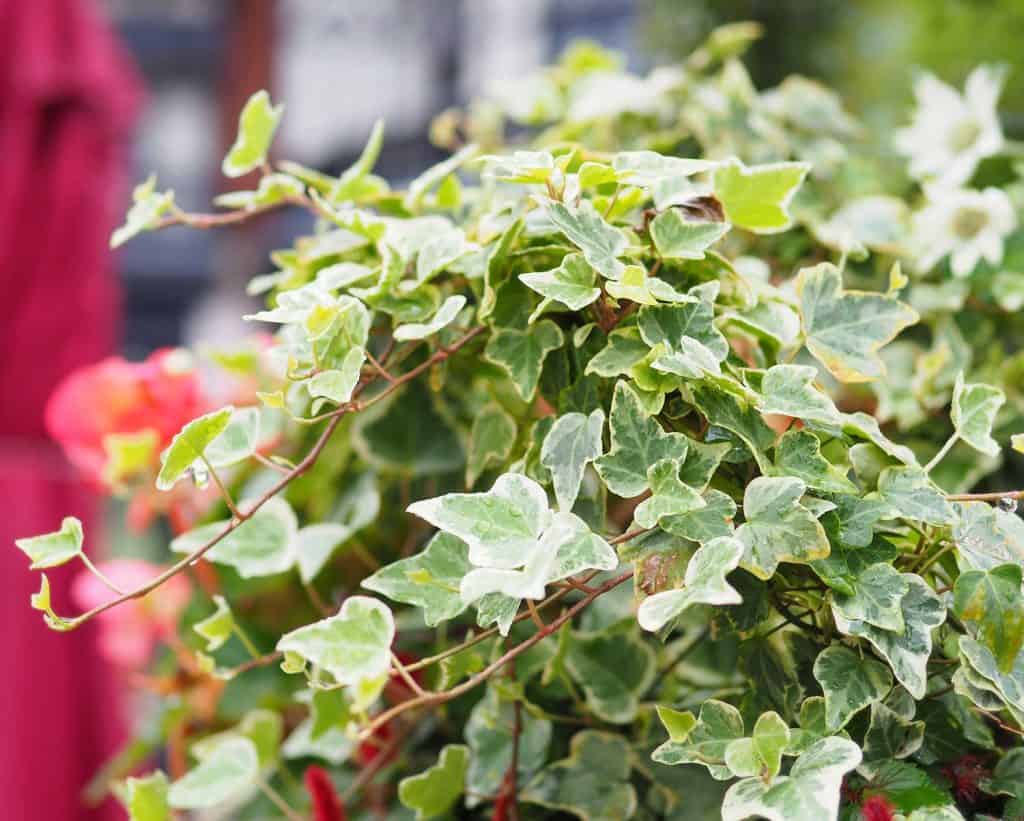The English Ivy plant is one of the most popular houseplants today. The beautiful heart-shaped leaves go perfectly with any indoor decor, and they can add a bit of character to outdoor landscapes. However, like other house plants, they can be prone to health issues due to improper care. We've researched the most common reasons why the plant may fall into ill health, and in this post, we will cover them in detail.
Here are the most common reasons why your English Ivy may be dying:
- Overwatering
- Too hot temperatures
- Overfertilization
- Pest infestation
- Too little sunlight
- Mineral and nutrient buildup
You may often find English Ivy plants growing along the exterior of homes and older buildings. This fast-growing plant is relatively easy to care for for the most part. However, it can be invasive if not monitored and it can quickly become overwatered. Continue reading to learn how to best care for the English Ivy and keep its vines in check.
![An English ivy in flower pot at balcony home, Why Is My English Ivy Dying? [And What To Do About It]](https://gardentabs.com/wp-content/uploads/2021/10/Why-Is-My-English-Ivy-Dying.-683x1024.png)
Contents
Reasons Why Your English Ivy Is Dying
The biggest telltale sign that your English Ivy may be dying is the yellowing or browning of its leaves. If you notice that the leaves are turning colors, drooping, or falling off, the chances are that the plant has a severe health issue or pest infestation that needs to be addressed as soon as possible.

Overwatering
Over-watering the ivy can cause the leaves to turn brown within a matter of days. English Ivy plants prefer to grow in slightly dry soil, which means that if you water it more than once a week, it can quickly cause the leaves to become oversaturated. It can also cause fungal diseases to develop.
Too hot temperatures
Ivy plants grow best in temperatures between 50 to 70 degrees Fahrenheit, though they can tolerate cooler temperatures in moderation. If your plant is starting to turn brown or appears to be drying out, chances are the temperatures may be too hot. Remember that these plants originate from northern and central Europe, and they prefer cool to moderate temperatures overall.
However, you'll want to keep the plant away from especially drafty areas near doors or air conditioner window units. If you suspect that your plant may be dying from too hot temperatures or too little humidity, consider placing a hygrometer in the room to keep abreast of the environment.
Learn more about this hygrometer on Amazon.
Overfertilization
Applying too much fertilizer to the ivy plant can cause an oversaturation of nitrogen. In turn, this can lead to a buildup in the plant's soil, which is never a good thing.
If you notice that your plant's leaves are starting to appear dry and crispy, the chances are that it has too many nutrients in the soil, and flushing it may be the best option to get it back to normal. Afterward, avoid fertilizing the plant for a few months unless necessary.
Also, be sure only to apply fertilizer in the spring and summer months when new growth appears. Like most plants, the ivy will be dormant during the winter months and won't need many nutrients.
Pest infestation
It can also be possible that your ivy plant is suffering from a pest infestation. This is especially common for ivy plants that are grown outdoors. Pest issues are almost guaranteed if your plant is under-watered, under stress, or kept in an outdoor and open location.
Because of this, it's recommended to wash your plant regularly to remove pests, dirt, and other residues that can accumulate on its leaves.
You can also apply commercial or all-natural pesticides to the plant to keep bugs and insects at bay. One of the most popular pests found on ivy plants is spider mites. These small critters will suck the juices from the leaves, leaving tiny black spots and webs beneath them. You can use neem oil, dishwashing soap, and rubbing alcohol to manually remove the plant's bugs.
Read more details about this pesticide on Amazon.
Too little sunlight
Ivy plants grow in medium to bright lights for the most part. Depending on the variety, there may be some variation, but they will require at least indirect sunlight daily to thrive.
When the ivy doesn't receive enough light, the leaves may start to turn downward, wither, or become browned on the edges. It's also important to remember that if the plant is left in a dark location, the growth will be slower than it would be in a brighter area.
Mineral and nutrient buildup
In addition to over-fertilization, your plant can also suffer from a buildup of nutrients from the type of water you use. If the plant is located outside, it can also experience issues from long periods of heavy rainfall.
A buildup of salt or magnesium in the plant's soil can cause the edges of the plant to turn brown and crispy. The quickest way to fix the issue is to change the plant's soil and only use distilled water moving forward.
How do you fix overwatered English ivy?
Rectifying an overwatered English Ivy is a pretty simple process. First, you'll need to stop watering it. Then allow the soil to dry out for a week or two before watering it again. If your ivy is in a pot, ensure that the water can escape through the bottom drainage holes and never let it sit and accumulate in the pan.
Not only can the sitting water lead to root rot, but it can prolong the time that it takes for the soil to dry out completely. If you're worried about the holes becoming clogged, consider placing a small piece of mesh wire at the bottom of the pot to prevent this.
Is my ivy under or overwatered?

Indoor ivy plants should typically be watered every 5 to 7 days. The soil should be kept moist, but it shouldn't be soggy. If the ivy plant is dry, it'll have leaves that are beginning to wilt, look dry, brittle, and turn brown or yellow. The plant will have leaves that appear plump, droopy, and may start to turn brown.
A rule of thumb is to water the plant once the soil dries out. It's always a good idea to first check the current moisture level of the soil before adding additional water. To do this, place your index finger in the soil about 1 to 2 inches deep. If the soil feels moist, you won't need to water the plant. However, if the soil feels dry and crumbly, then it's due for a watering session.
Check out this watering pot on Amazon.
Can English ivy get root rot?
Yes. An English Ivy can get root rot if it is overwatered. Often, you can smell when a plant has root rot. Typically the plant will emit an odor from the soil that resembles rotten eggs or sour milk. You may also notice that the plant's leaves are discolored, wilting, or stunted.
It's best to dig into the plant soil to visually inspect the roots to confirm root rot before treatment. If the roots appear engorged with water and brown and soggy, the plant has root rot.
How do you keep English ivy under control?

One of the quickest and easiest ways to keep the limbs at bay is to pull as many as you can by hand simply. You can also use a pair of shears to cut off extended branches and limbs. Be sure never to cut more than a third of the plant's stems, as it can cause the plant to go into a state of shock. If you want to slow down the ivy's rate, you can also expose the plant to less lighting.
Ivy plants require indirect lighting daily. However, if you want to move the plant to a lower-lit area a few times a day, this can help stifle its growth. When doing so, be sure to also monitor the plant's growth to ensure that it doesn't suffer from a lack of light.
Check out these pruning shears on Amazon.
Wrapping Things Up
English ivy plants are charming house plants that can be grown relatively quickly. However, they can be easily susceptible to overwatering, especially when they're baby plants. If you believe that your ivy is dying, the first place to start is to examine the symptoms and then going down to the line to check out what environmental or maintenance factors could be contributing to the issue.
Be sure to check out some of our other posts before you go:




